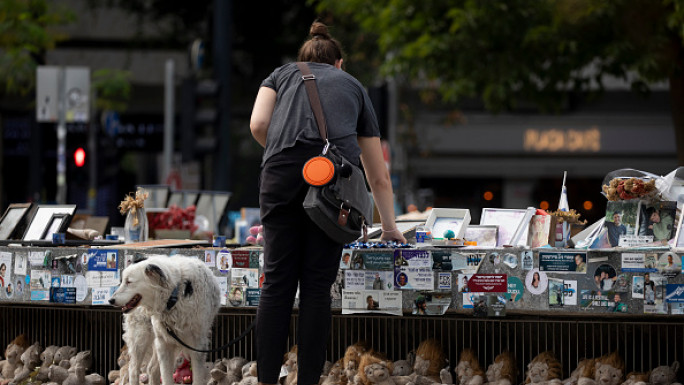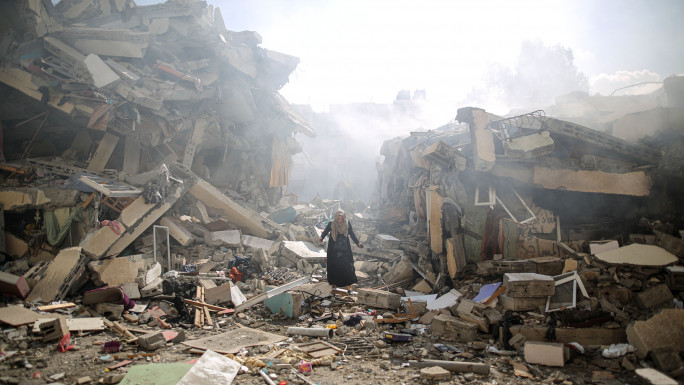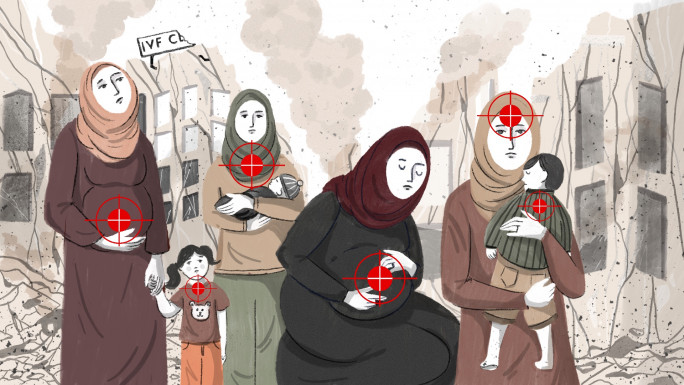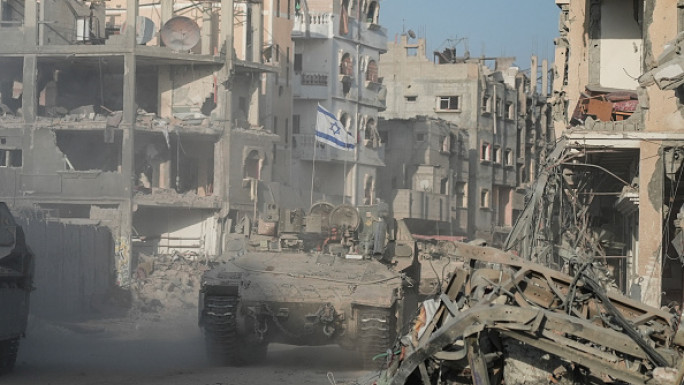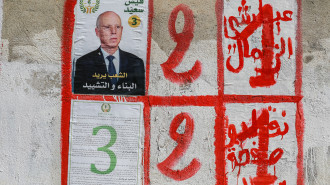
Gaza's future after a year of war: Israel is redesigning an endless occupation

A year of Israel's genocidal assault on Gaza has left in its wake unprecedented destruction and a staggering humanitarian crisis.
More than 41,000 Palestinians have been killed, 90% of Gaza's population displaced, and most civilian infrastructure destroyed.
While Israel's relentless military campaign in Gaza shows no signs of stopping, rendering the enclave less habitable by the day, discussions of the “day after” have gained prominence, despite failed ceasefire negotiations.
Since the onset of its relentless assault, Israel has stated that its goal was to eliminate Hamas, however unrealistic that goal is, without being clear about its endgame for Gaza.
While it has so far failed to achieve the goal of eradicating Hamas, a close inspection of the deal breakers in the different rounds of ceasefire negotiations and the unprecedented level of carnage it brought about in Gaza are indicative of what Israel's endgame for Gaza is: rendering it a tent city and “reengineering” its ongoing occupation and control of it.
As the contours of Israel's vision for Gaza become clearer, plans about what should happen when the bloodshed ends are being floated around in multiple “day after” plans.
Most of those plans have the same running themes, namely governance, security, and international aid.
|
|
Different or the same 'day after' plans?
On a technical level, many plans are floating around for the 'day after'. While ad hoc and not coordinated with different stakeholders, they often exclude Palestinians. When they are incorporated, such proposals often impose roles on them.
The most prominent of those plans is that of US President Joe Biden's administration. It aligns with the Israeli goal of eradicating Hamas as both a political and military entity and ending its rule in Gaza. In essence, the US vision centres on Saudi Arabia and Israel normalising relations in exchange for Israel agreeing to a ceasefire and allowing a new “revitalised” Palestinian Authority (PA) to run the West Bank and the Gaza Strip within the framework of a two-state solution while accepting “limited influence” in Gaza.
According to this vision, Arab countries would contribute to post-war reconstruction in Gaza.
The Biden administration laid out its vision for a post-war Gaza within the parameters of six principles, which include: no forceable displacement from Gaza, no Israeli reoccupation of Gaza, no blockage or siege on Gaza, no reduction in the territory of Gaza, a Palestinian-led governance under a unified Palestinian Authority in both Gaza and the West Bank, and a sustained mechanism for reconstruction in Gaza.
In a similar vein, Israel's Minister of Defence and retired military general, Yoav Gallant's proposal includes that the civil administration and governance of the Gaza Strip is passed to “Palestinian players”, while Israel retains complete freedom to carry out military activities within the Gaza Strip after the war on Gaza ends.
It also proposes that a multinational task force comprised of a coalition of international bodies and actors, including Arab countries, EU states, and other Western allies, govern the border area and be put in charge of reconstruction and rebuilding the enclave. In his plan, there will be no constant Israeli civilian presence and no Israeli settlements in the Strip.
The current Israeli coalition, headed by leaders of the messianic settler movement, including figures like Bezalel Smotrich and Itamar Ben-Gvir, who are driving Israel's government agenda, are “less nuanced” in their vision for “day after” plans in Gaza.
They call for removing 90% of Gaza's population, permanent control of the Strip's territory and its “resettlement”. Their calls, however fringe the Western international community may want them to seem, are rather consistent with implemented Israeli policies in the Strip.
The Israeli regime is laying the ground to further tighten its grip over Gaza post the genocide. When Israel unilaterally disengaged in 2005 by pulling out its military forces and installations and dismantling the settlements built on the territory it had occupied for nearly 40 years, it argued that with its withdrawal it no longer occupied the Gaza Strip.
However, while it did not have “boots on the ground” in Gaza, Israel still maintained effective control over Gaza's land crossings, airspace, territorial water, and tax revenues.
In its military campaign, the Israeli regime has not only retained full control over the territory of Gaza but has also fortified two strategic corridors, the Philadelphi corridor which runs along the Gaza-Egypt border, and the Netzarim Corridor which bisects the Gaza Strip, thus providing clues about its plans to reshape the Strip and entrench its military presence there indefinitely.
The Israeli regime's reduction of Gaza into rubble along with the build-up of the Netzarim and Philadelphi corridors should be understood as part of a large-scale project to geographically fragment the Gaza Strip and severe all land connections between Gaza and the outside world in a prelude to “redesign” and reassert dominance and control over the Strip.
Within the context of the unfolding genocide of Gaza, these “day after” plans must be seen not as a move towards securing Palestinian political aspirations, but as a continuation and extension of policies designed to fragment, weaken, and ultimately erase the Palestinian presence in Gaza.
In effect, they are about emulating a West Bank-style governance model for Gaza that provides security solutions to a political problem.
|
|
The West Bank governance model: Entrenching Israeli colonisation
The three running themes of most of the “day after” plans for Gaza centre around ensuring Israel's security, the provision of humanitarian assistance, and establishing a pliable leadership to govern Gaza, thus mirroring the main ingredients of the governance framework put forth by the Oslo Accords within the framework of the two-state paradigm in the West Bank.
The Oslo Accords, far from being a genuine step towards Palestinian self-determination, have entrenched Israel's control, dominance, and colonisation of the West Bank.
By delegating the day-to-day governance of Palestinian population centres to the PA, Israel devolved limited responsibility to the Palestinian Authority for direct forms of surveillance of the Palestinians.
While the PA provides basic services and administers civil affairs, its security forces coordinate with Israel to suppress any form of resistance, including political dissent or activism that challenges Israeli control, rendering it a subordinate body to Israeli military and political dominance.
By centring Israeli security at the expense of safeguarding the rights of the Palestinian people, the pliable Palestinian Authority collaborates and coordinates with the Israeli regime, compromising the ability of the people to resist occupation while criminalising resistance. This has brought Palestinians more under Israeli control.
In this model, Israel retains ultimate control over borders, resources, and security maintaining the illusion of Palestinian self-governance. This allows it to continue to expand settlements, control land, and manage the occupation with minimal direct responsibility for the Palestinian population. For Palestinians in the West Bank, this system has resulted in deep economic dependence, political fragmentation, and the erosion of any meaningful sovereignty.
Furthermore, the Palestinian Authority's heavy reliance on international aid to function has rendered its sheer survival conditional on the maintenance of security cooperation with Israel. This dynamic has cemented Palestinian economic dependency on Israel and entrenched the PA's role as a gatekeeper, managing the occupation on behalf of Israel while limiting its capacity to challenge Israeli policies effectively.
This West Bank model of governance, which Israel seeks to replicate in Gaza, is not a benign system of self-rule but a carefully managed apparatus of control. By exporting this model of governance to Gaza in a post-genocide landscape, Israel aims to solidify its control and consolidate its territorial and political goals while walking free from its responsibilities as an occupying power.
It will provide a framework for Israel to continue to perpetuate its colonisation and subordination of the Palestinian people unabated, while presenting itself as committed to the illusion of the two-state paradigm.
Shatha Abdulsamad is a Palestinian researcher and policy analyst based in Berlin. She is a Policy Member at Al-Shabaka: The Palestinian Policy Network
Follow her on X at @shathaasamad


